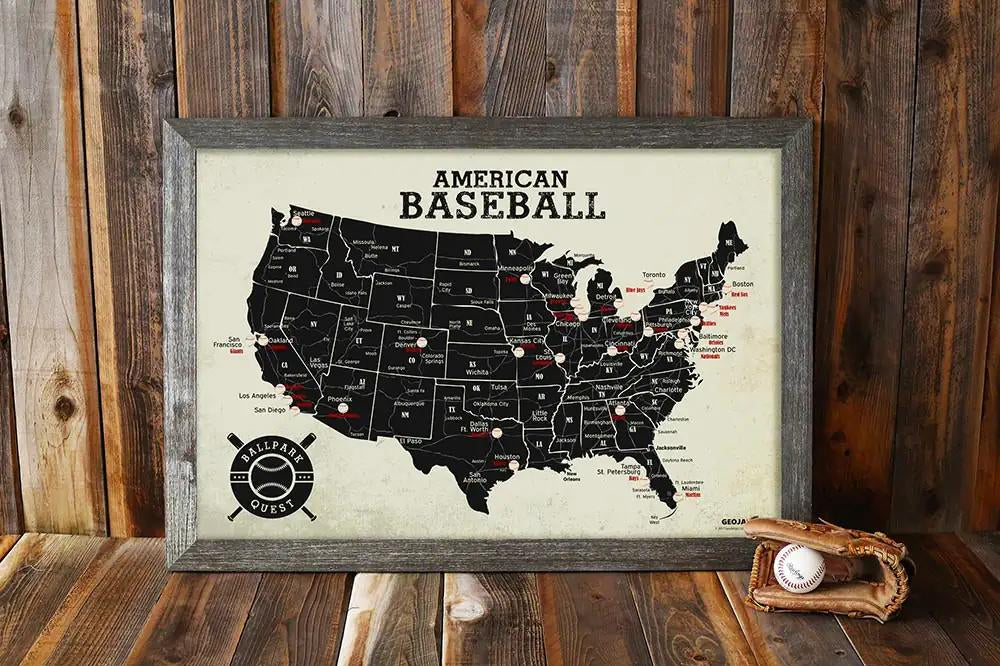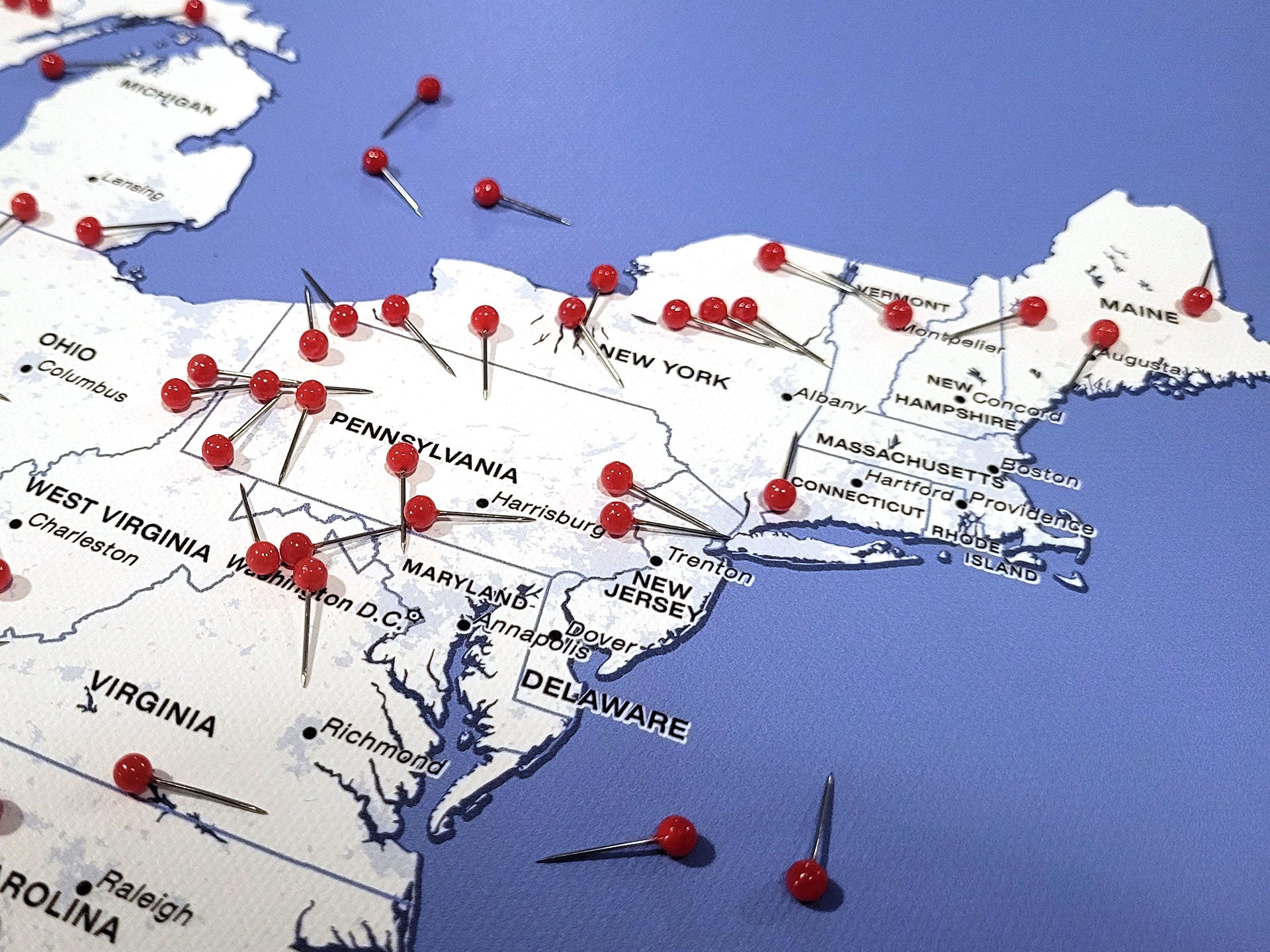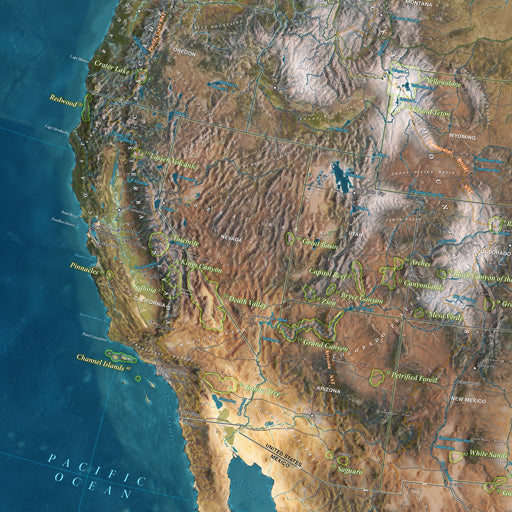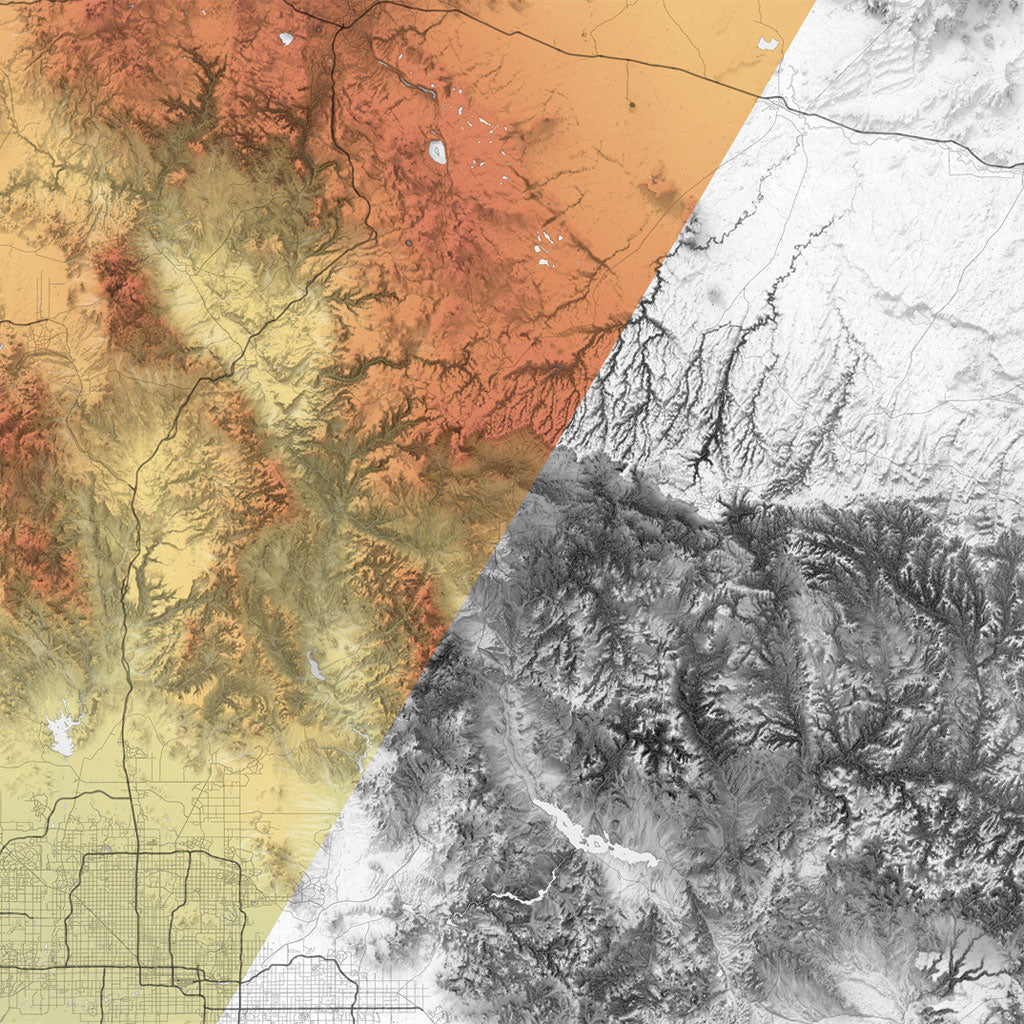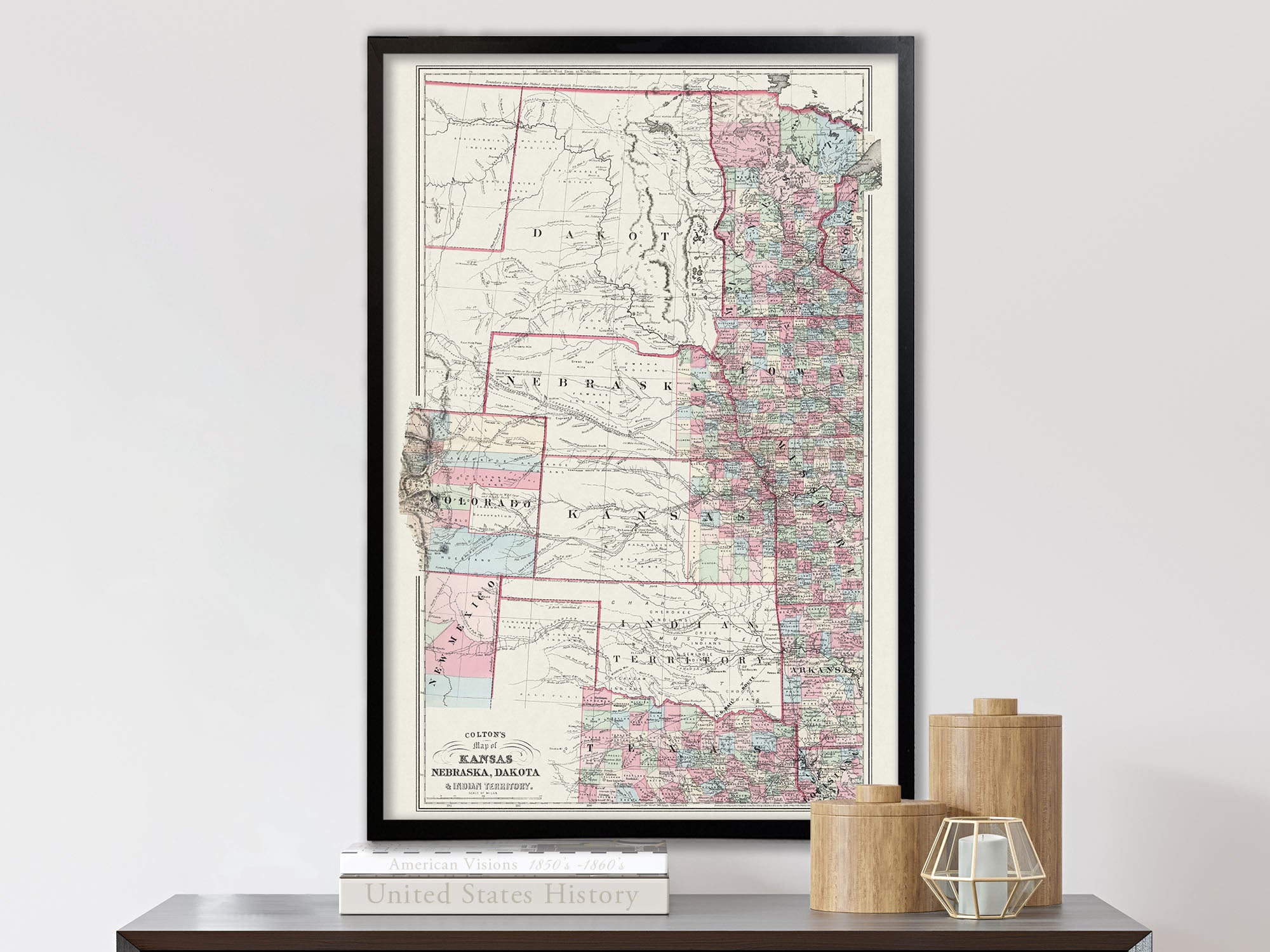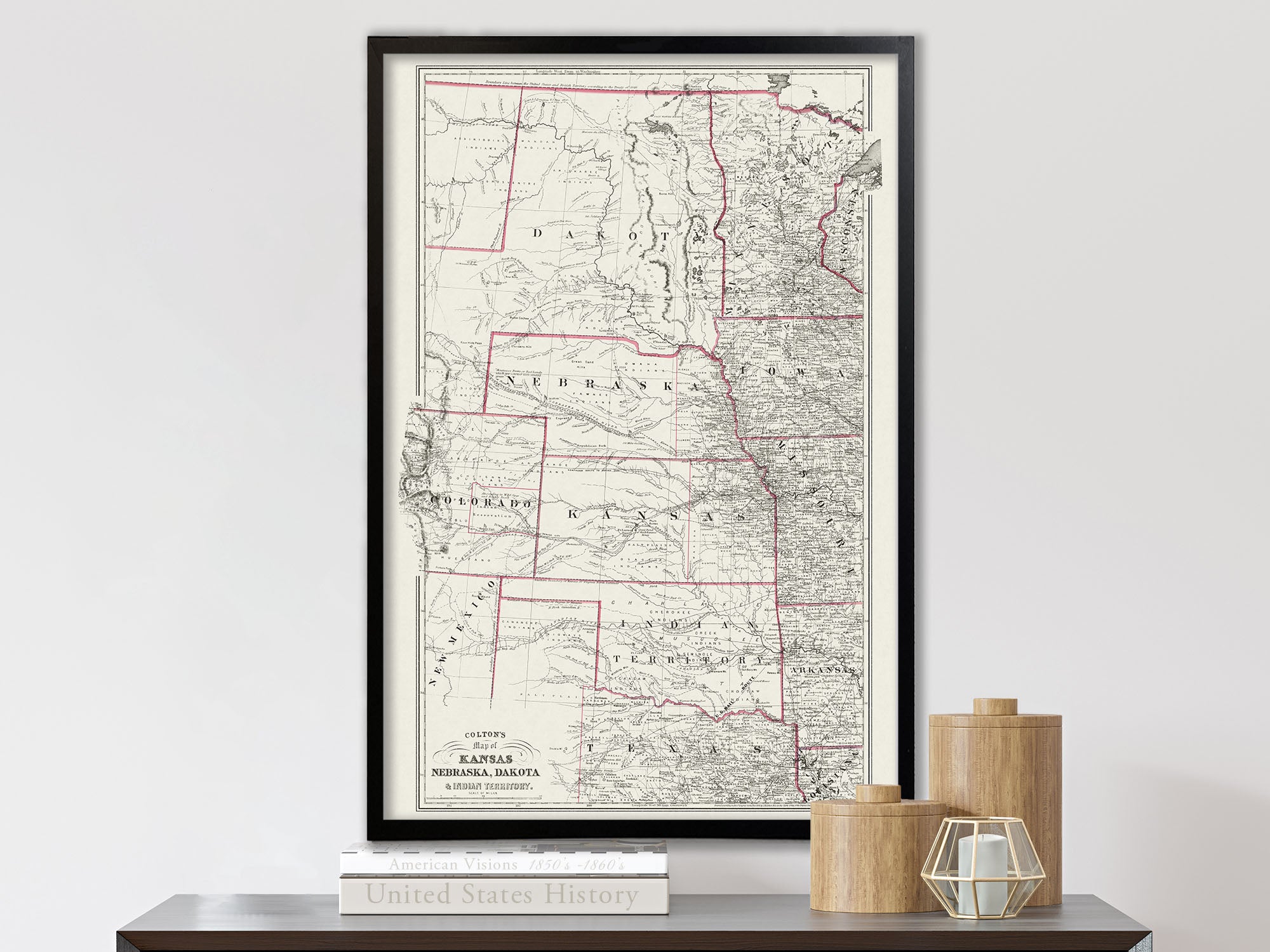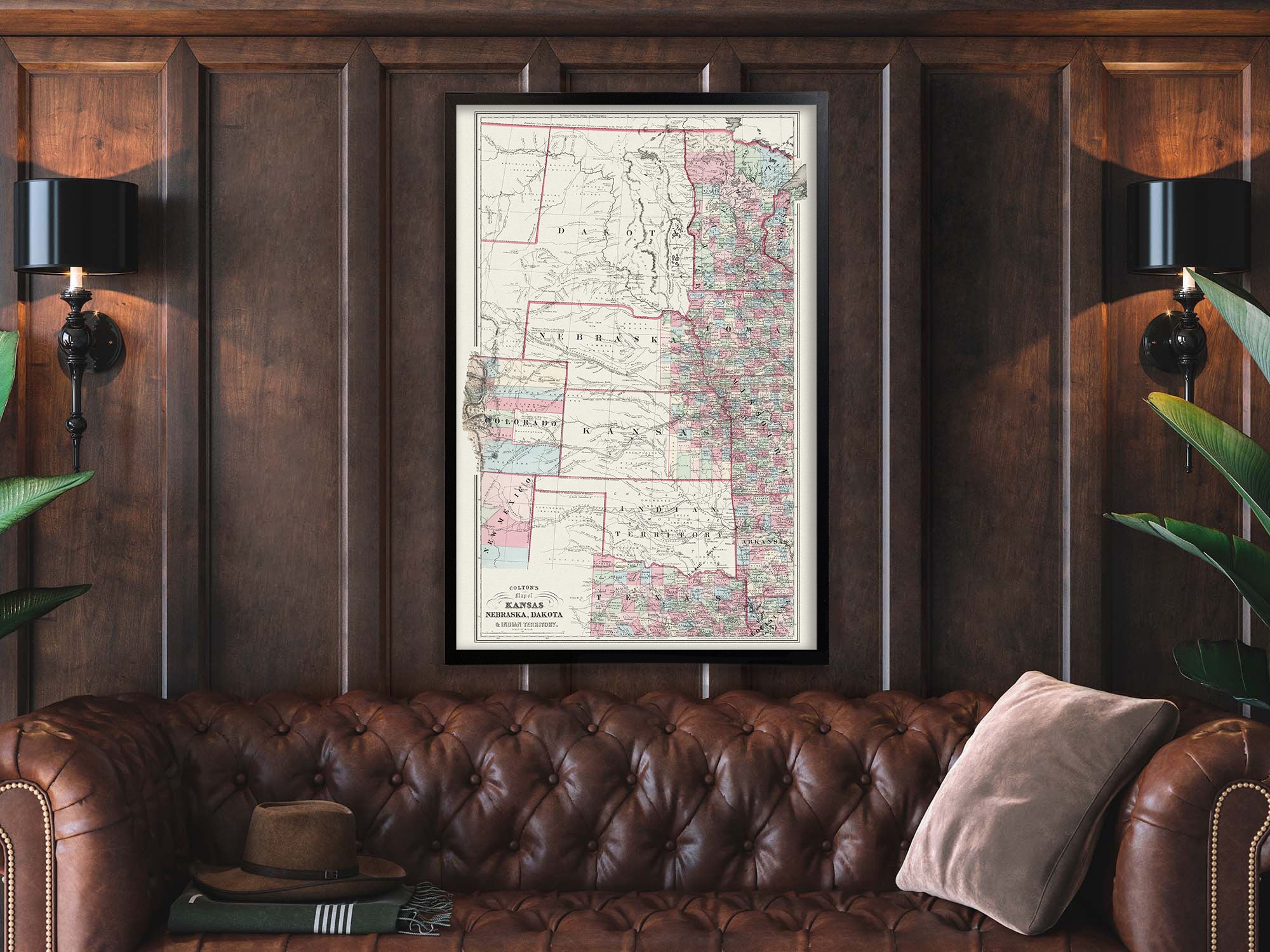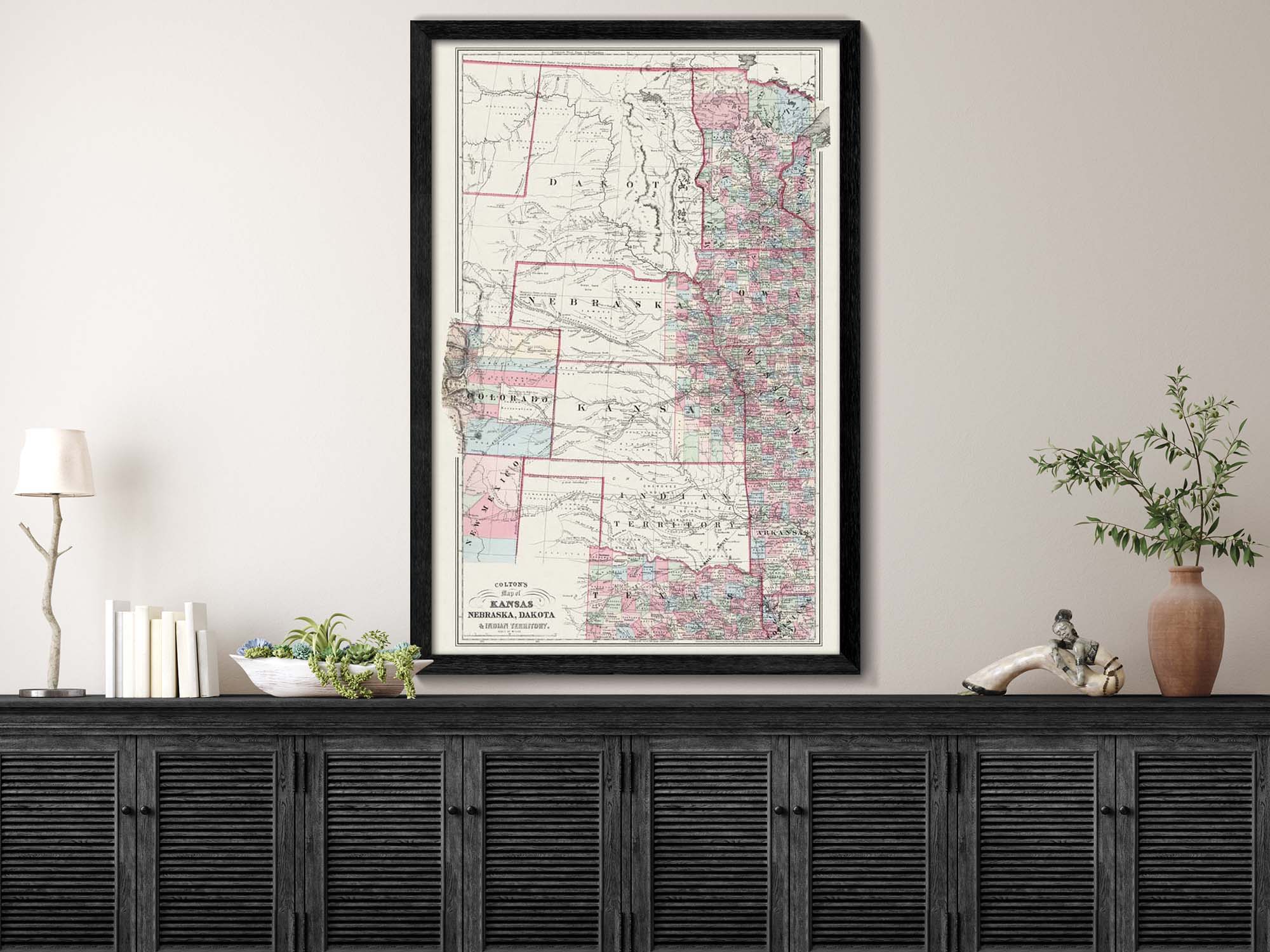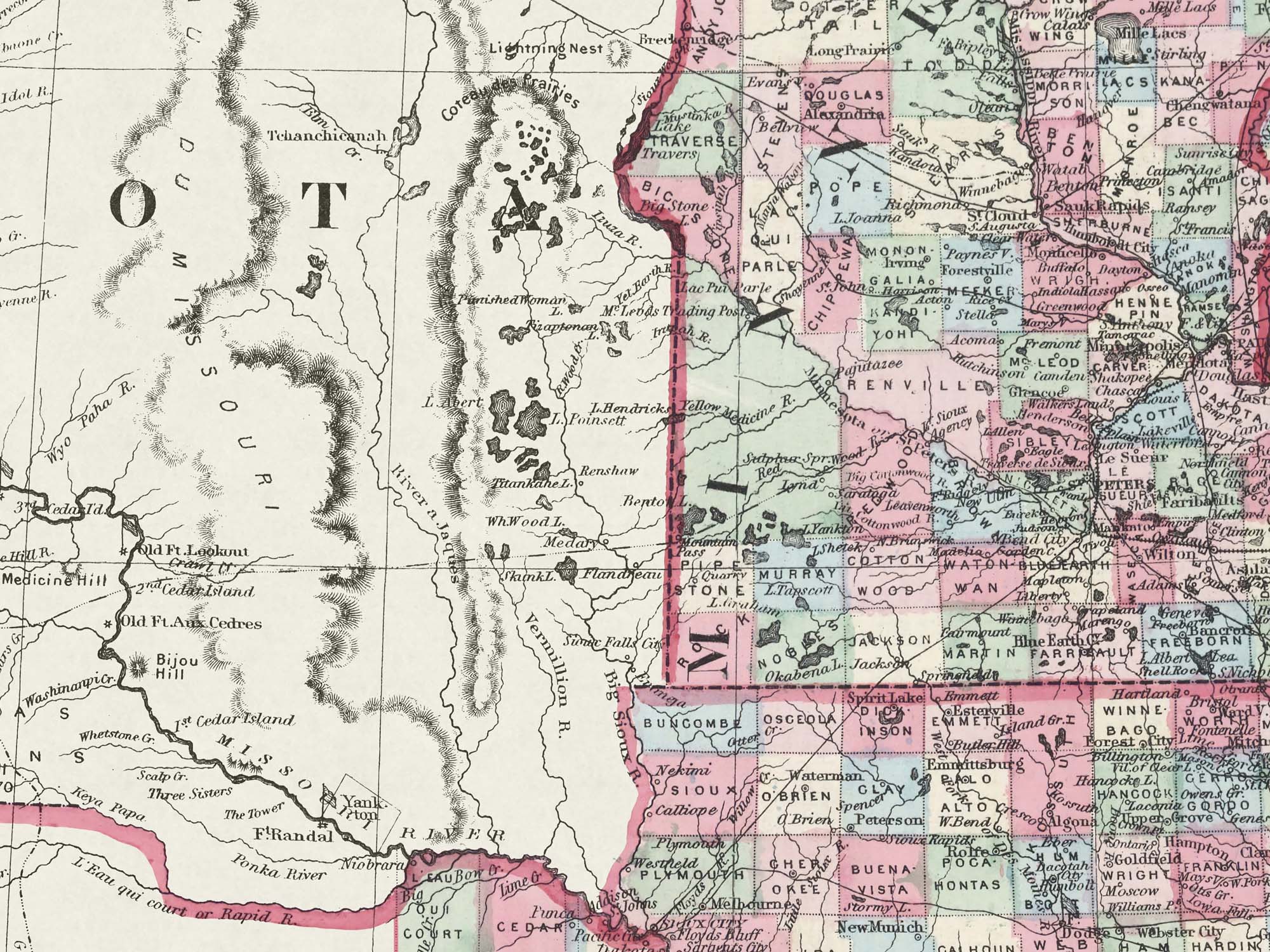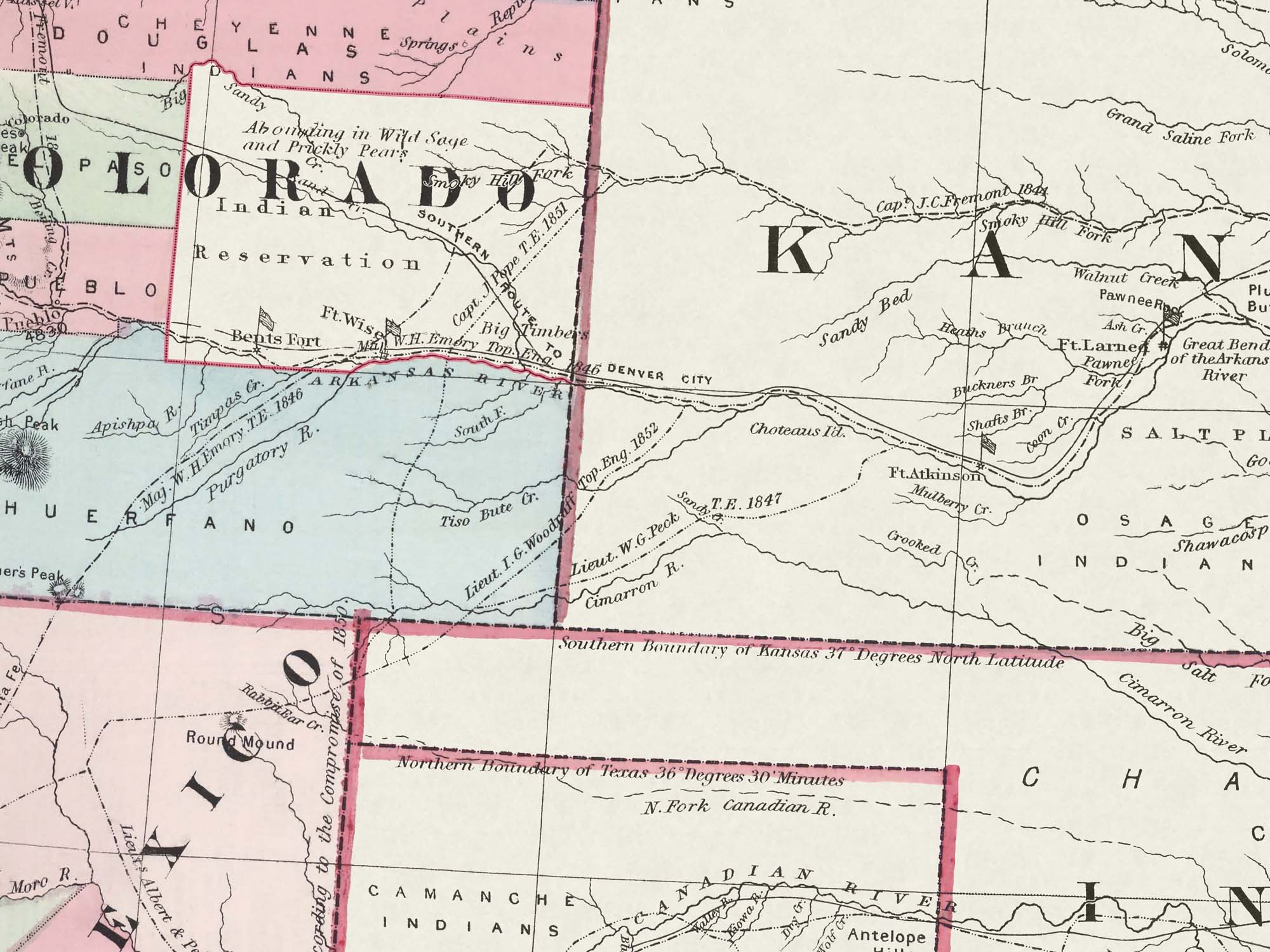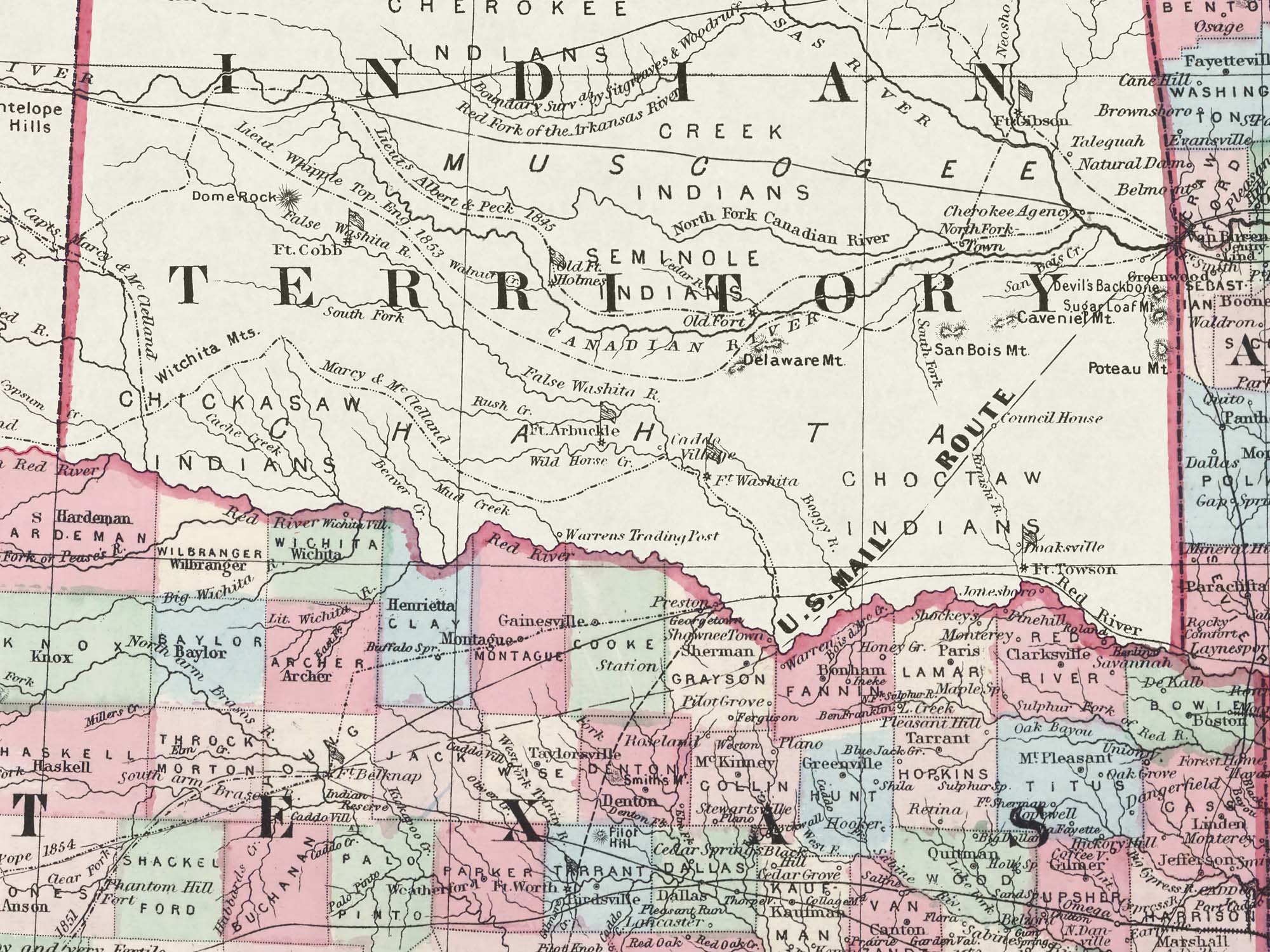This map is a faithful reproduction of the original 1850 map restored to its former glory using the latest digital imaging technology.
Map of Midwest States
Standard maps will enter production right away, within the next business day. Larger orders may take more time.
All push pin board maps (framed or canvas wrap) include push pins, are easy to hang, and ship free in the continental US. We'll select the optimal shipping method for fast delivery.
For personalized maps we collaborate closely to guarantee satisfaction. Expect a proof to be sent to you. Your swift responses will facilitate the production and shipping process.
If there are any problems with your map we will take care of you. Returns for all maps are straightforward and hassle-free.
For personalized maps, engaging with the email proofs we send ensures that the final product meets your expectations precisely.
We have 30+ years of cartography experience, meticulously craft each order by hand to ensure excellence, and 100% guarantee your satisfaction. We produce maps that are built to last, with state of the art production and archival quality materials.
Customize with quotes, legends, or dedications using "Personalize Map" options to craft your masterpiece map. Or reach out to us if you don't see the option you want.
We collaborate with you from design to approval of your proof so that you are 100% happy before we print and ship.
Our excellent customer service is always open to you.
Restored 1850's Map
Fine Art Quality
Impressively produced with Archival Inks, Rich Color Depth, and clear and vivid labels. We use premium matte paper.
Expert Craftsmanship
We prepare the map using Fine Art Giclee production techniques. We roll the map in a sturdy tube for shipping to provide a crease-less piece of art.
Vintage State Map of Midwest States
- Description
- Specs & Construction
About the Map: Explore the geographic history of the Midwest in this historic map. This map is part of our vintage USA State Map Collection showing the geography of the states in the 1850-1860s and the time of the Civil War.
Restoration: The map is a reproduction of the original map meticulously restored to its former glory using the latest digital imaging technology. Using this technology, we carefully restored the colors, torn edges, creases, smeared writings and more. We enhanced features while keeping the original character and design of the map.
This map is unframed, sold as an art print. Frames are shown for illustration ONLY.
Geographic Details: This historic map shows many details of towns, roads, railroads, and waterways in the 19th century of the United States.
Shows historic cities such as Lincoln, Dodge City, Fargo and more!
Explore the historic boundaries of the cities, counties, and states that have changed over the years. Discover physical changes in the geography - such as former lakes and canals used for transportation and agriculture.
Available Sizes: For an impressive display and maximum readability, choose the largest size available.
Smaller size prints make excellent wall art in groups. Please note that there is no guarantee that small text will be legible in print.
Great Gift For: Interior Designs, Teachers, History Buffs, Anniversaries, Birthdays, Friends, Family, and many more!
Production and Shipping Times: The amount of time it takes for your map to arrive depends on where you live and how fast you approve the proof if you’ve ordered a custom map. See Production & Shipping.
Quality and Guarantee: We stand behind our work and guarantee the construction and quality. Contact us if you have any problems with your map and we will coordinate to ensure you are very happy with your purchase.
Materials and Production: This reproduction is printed on Fine Art Museum Quality Paper with giclée inks. The thick paper is archival quality and acid-free with vivid color definition.
Paper details:
- 10 mil thick
- 230 gsm weight
- Museum Quality Matte finish
Made in the USA by a USA Small Business and Professional Geographer & Cartographer.
Shipped in a tube and rolled to eliminate creases.
Why choose GeoJango Maps
- We have a lifelong passion for maps, backed by 30+ years of cartography experience and Master's Degrees in Geographic Information Systems (GIS) from Penn State University and Environmental Science from the University of South Florida.
- Our incredible investment into the design of our maps results in unparalleled detail that matters: they will educate you, and grow with you as you travel the world and track your travels—where other maps miss the mark.
- We’ve built the leading map production studio in the USA and use exclusively USA-made materials. Each pin map is proudly crafted by hand, printed by us on the finest materials, mounted on museum-quality Gatorfoam, and carefully framed just for you.
History of the Time
The 1850s marked a pivotal period in the history of the American Midwest, characterized by significant social, economic, and political changes that laid the groundwork for the region's development and played a role in shaping the nation as a whole.
During the 1850s, the Midwest was a rapidly expanding and dynamic region. This decade followed the westward expansion that had been ongoing since the early 19th century, driven by factors like the Oregon Trail, the California Gold Rush, and the opening of new territories for settlement. The Midwest, encompassing states like Ohio, Indiana, Illinois, Michigan, Wisconsin, Iowa, and Minnesota, played a central role in this expansion.
One of the most defining issues of the 1850s was the growing tension over the spread of slavery into new territories. This conflict came to a head with the Compromise of 1850, a series of legislative measures intended to maintain a balance between free and slave states. However, the passage of the Kansas-Nebraska Act in 1854, which allowed for popular sovereignty in determining the status of slavery in these territories, further intensified sectional tensions and led to violent clashes, notably in "Bleeding Kansas."
The 1850s also witnessed the emergence of the Republican Party, which was founded in 1854 in response to the Kansas-Nebraska Act. The party's platform was centered on opposition to the expansion of slavery into the western territories. This political development foreshadowed the significant role the Midwest would play in the upcoming national elections and the subsequent issues leading to the Civil War.
Economically, the 1850s were a period of growth and transformation in the Midwest. The region's fertile land and suitable climate made it an ideal location for agriculture, and farming became a significant economic activity. The introduction of new technologies, such as the steel plow and mechanical reaper, revolutionized farming practices and increased agricultural productivity. Additionally, the development of the railroad system facilitated the movement of goods and people, connecting the Midwest to markets in the East and West and contributing to the region's economic expansion.
The urbanization of the Midwest also gained momentum during this decade. Cities like Chicago, with its strategic location along Lake Michigan and its connection to the railroad network, experienced rapid growth. The influx of immigrants and the expansion of trade and industry fueled the development of vibrant urban centers.
The 1850s were marked by cultural and social changes as well. The region saw the establishment of universities and cultural institutions, contributing to the intellectual and artistic development of the Midwest. The spread of the temperance movement and the growing women's suffrage movement also gained momentum during this period.
As the 1850s came to a close, the Midwest's role in the national narrative was solidified. The issues and conflicts that emerged during this decade, particularly those related to slavery and sectionalism, set the stage for the broader struggles that would eventually lead to the Civil War. The Midwest's growth and influence, both economically and politically, would continue to play a significant role in shaping the nation's history in the years to come.


